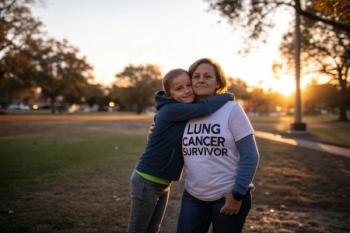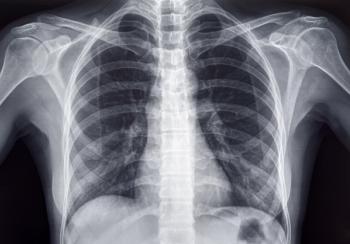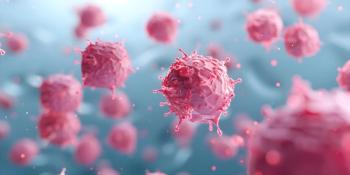
Liquid Biopsy May Guide Treatment and Improve Outcomes in Lung Cancer, New Study Shows
While tissue biopsy is currently recommended as the gold standard for determining mutations in non-small cell lung cancer, its success is not guaranteed, prompting the consideration of the liquid biopsy method as a viable alternative.
Utilizing the liquid biopsy method for determining lung cancer mutations may improve health outcomes compared to the standard tissue biopsy method, according to a new cost-effectiveness analysis published in
Non-small cell lung cancer (NSCLC) is the most common type of lung cancer. Characteristic genetic mutations play a role in the development of this type of cancer. Identifying these mutations as part of a patient’s diagnosis helps to guide targeted treatment plans and improve outcomes. Common mutations include EGFR, BRAF and MET, among others.
Notably, these genetic mutations differ but have shown a correlation with specific racial or ethnic backgrounds. As a result, health inequalities exist due to a combination of genetic vulnerability and varied access to effective healthcare resources.
Currently, guidelines recommend tissue biopsy as the gold standard for determining mutations in NSCLC. This biopsy method involves the direct collection of tissue from the lung and sequencing the DNA of cancerous cells. However, this method is not always successful. Unfortunately,
The newer liquid biopsy method offers an alternative to tissue biopsy. Conducted via a simple blood draw, liquid biopsy provides a quick turnaround time, albeit with less sensitivity than a tissue biopsy. Importantly, liquid biopsy identifies certain mutations better than others, which in some instances necessitates a follow-up tissue biopsy. As such, current guidelines do not recommend using liquid biopsy alone.
Considering the importance of identifying target mutations in NSCLC, researchers from the University of California-San Francisco, including first author
To accomplish this, the team investigated two main comparisons between the tests. Primarily, they studied the impact of the testing change on health outcomes from a cost-effectiveness perspective. In addition, the researchers factored in the inherent variability of mutations associated with racial and ethnic backgrounds to determine if liquid biopsy might play a role in influencing health inequalities associated with NSCLC outcomes.
In this analysis, the researchers used a health economic model to determine quality-adjusted life-years (QALYs) and costs associated with liquid biopsy or tissue biopsy. Essential factors involved in this comparison included the speed of turnaround time to obtain results and start treatment as well as more consistently accurate results.
Quality-adjusted life expectancy (QALE) metrics were derived as a marker of health inequality, differentiating for racial and ethnic genetic background as a predictor of liquid or tissue biopsy performance.
Ultimately, the investigators found that initial liquid biopsy (“LB-first”) testing resulted in an additional 0.21 QALYs among treated patients, over traditional tissue biopsy sequencing. They also found that costs were similar between the two groups.
From a health inequality perspective, liquid biopsy actually increased existing inequalities, but resulted in an overall improvement in health outcomes for all racial and ethnic backgrounds. This can be explained by breaking down liquid biopsy performance among different mutations, which occur more frequently in certain genetic groups than others.
For example, Asian patients experience the most QALY benefit (0.31) of any group, as liquid biopsy performs best in mutations that occur more frequently in this demographic. While these improvements increase the health inequalities seen in NSCLC, the QALY improvement seen by each group suggests an overall benefit.
Based on the findings, performing an initial liquid biopsy can provide improved health outcomes and offer a cost-effective alternative to the current standard process.
The authors concluded that while those with negative liquid biopsy results will still require a tissue biopsy to avoid false negatives, individuals with positive liquid biopsy results will benefit from much faster test turnaround and prompt initiation of guideline-directed therapy.
Newsletter
Get the latest industry news, event updates, and more from Managed healthcare Executive.




